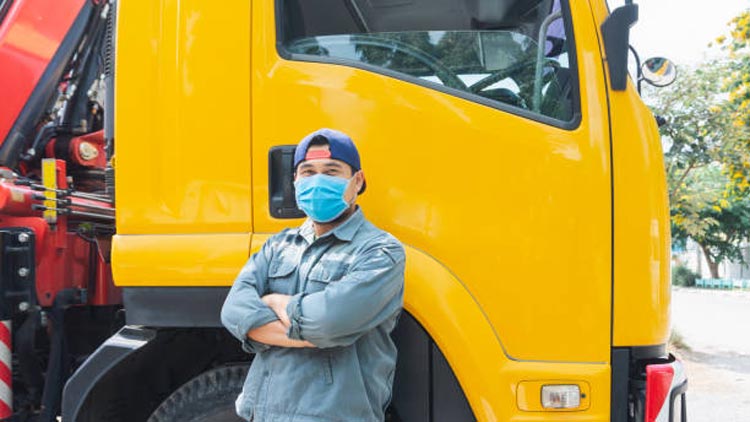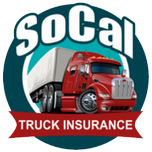
How to Manage the Risks of COVID-19 on Truck Drivers
Truck drivers are front-liners who continue to provide services amid the COVID-19 pandemic. While at work, they are at higher risk of contracting coronavirus due to exposureThe extent to which the truck is at risk of encountering an insurable incident while not under dispa... to several people from pick-up point to drop-off point and also due to handling frequently touched objects. This means getting commercial trucking insurance is vital.
Educate Long Haul Drivers About the Disease
Employers must conduct a thorough driver trainingPrograms designed to educate and improve the skills of drivers, focusing on safe driving techniques,... about the risks and symptoms of Coronavirus as well as the Centers for Disease Control (CDC) guidelines so drivers can follow the recommended steps when sick.
When feeling sick, drivers should inform their employers and stay at home to get medical care. They should also isolate themselves to avoid spreading the virus, and they should monitor their symptoms during their home isolation.
The moment they have trouble breathing, experience persistent pain or pressure in their chest, feel confused, have difficulty staying awake, or have bluish lips, they must call a doctor and inform them of what they are experiencing.
When sick, one should also wear a mask to cover his nose and mouth to minimize the risk of public health. When coughing or sneezing, one must cover the mouth and nose and immediately sanitize his hands right after doing so.
Frequent hand washing is essential too and you should avoid touching your eyes, nose, and mouth with unwashed hands.
Establish Protocols For Getting Sick On The Road
It is the responsibility of an employer to ensure the safety of its employees. To do this, companies in the trucking industry must not only provide personal protective equipment to drivers, but they must also provide measures to encourage sick drivers to stay home and form a plan for when they become sick while on the road.
The plan should include where they can stop, where they can seek immediate medical care, and how the freight will be delivered if ever they contract the virus while on-duty.
This plan should also be well communicated to all drivers, and a contact person must be available at all times to assist drivers in the event that they get sick and need assistance implementing or improvising with regards to the plan.
Minimize Touch-Points While On the Job
One of the reasons why trucking is such a high-risk job during COVID-19 is because it’s a high-touch business.
From picking up freight to delivering freight, a truck driver has already come in contact with everyone in the supply chain be it store workers, dock workers, or truck stop attendants.
Without proper precautions in place, a trucker is highly likely to test positive for COVID. Therefore, it’s the responsibility of trucking companies to equip each driver with PPE, a cloth mask, and a hand sanitizer to make sure they’re minimizing exposure to the COVID.
Aside from these, truckers must also limit their time spent outside of the truck cab during fueling, loadingAn additional cost built into the insurance premium to cover losses that are higher than expected fr... and unloading, and resting at a truck stop. And when inside the truck, they should choose to use a radio or phone to communicate with dock managers or other drivers rather than speaking in person.
Truckers also ought to minimize food handling by avoiding grocery stores and drive-throughs. Instead, they should pack their own food, water, and supplies to minimize the number of stops they have to make.
And if interacting with other people is unavoidable, they should avoid shaking hands, maintain social distancing, and wear cloth masks.
On the company’s part, they must implement paperless, electronic invoicing for fueling, deliveries, and other tasks when available. They must also establish more fluid communication loops with clients and other facilities so that they can inform them prior to the truck driver arriving at their facilities.
Given the situation, some facilities and truck stops may no longer allow truck drivers to use their restrooms. Therefore, communication is vital to help drivers plan ahead.
Keep Trucks Clean
A good precaution against coronavirus is to keep trucks clean. Regularly disinfect the truck cabin. Wipe the driver door handle, steering wheel, seat belt and buckle, arm and headrest, seat cover, turn signal, wiper controls, dashboard, air ducts, radio, and temperature controls.
Don’t neglect the sleeper berth either. Always clean the light switches, mattress tray, temperature controls, and other flat surfaces before and after use.
And if other people will enter the truck, clean and disinfect the truck before using it again. If one must share the truck with other drivers or riders, wear cloth face masks at all times. If there are ride alongs in a long haul drive, avoid sharing the same sleeping berth.
When cleaning your truck, only use supplies that are Environment Protection Agency (EPA) approved for use against SARS-CoV-2. These include your household bleach and 70% alcohol.
Also, the virus can spread faster in an enclosed space. Therefore, truck drivers should keep their trucks well-ventilated as possible.
Trucking Companies Must Comply With FMCSA RegulationsRules and standards set by the Federal Motor Carrier Safety Administration to govern the operation o...
To help protect the safety and health of truck drivers, it’s important that drivers follow the Federal Motor CarrierA company that provides transportation services for transporting goods via motor vehicles such as tr... Safety Administration (FMCSA) regulations.
According to the FMCSA, truck drivers are only allowed these hours of service: 14-hour work shifts maximum and they should not drive for more than 60 hours on-duty over seven consecutive days or 70 hours over eight days.
Drivers should also take 30-minute breaks after eight hours of coming on-duty. Additionally, long haul truck drivers are required to have 10 hours of sleep berth which can be consumed all at once, or split into two paired periods, with one spent in the sleeping quarter for at least seven hours and the other being at least 2-consecutive hours of off-duty.
Implement Health and Safety Protocols
Employees are not only at risk of getting sick while on the road. They can also contract COVID-19 while off-duty. Hence all companies must do their due diligence to strengthen their coronavirus disease control and prevention procedures.
First, a company must conduct regular work-site checkups to optimize their disease prevention strategies. Then, they must run a routine COVID test on their workers to quickly identify sickness and contain the spread of COVID-19.
Companies must also make sure they’re allowing workers to take time off when sick by providing flexible leave protocols and supportive measures to help integrate sick workers back into work.
With the uncertainty of the situation, workers are also likely to be stressed and anxious. Companies should establish provisions that will help workers manage stress and anxiety, such as having a go-to person to consult whilst maintaining anonymity.
And lastly, companies should do their best to schedule and assign work to employees while giving them adequate time to rest. In the event that workers are tired, they must equip workers with strategies to manage their fatigue to help ensure their employees’ safety while on-duty.
Avail An Insurance PolicyA contract between an insurance company and the policyholder, which outlines the terms under which t...
No matter how cautious a company is, there will always be unavoidable work hazards.
To protect your business and your employees against trucking problems, especially with the greater risks posed by the pandemic, reviewing a truck insurance quote to comprehensively manage the risks of COVID-19 on your truck drivers.
After learning about managing the risks of COVID-19 for truck drivers, you might be wondering how insurance fits into your risk managementThe process of identifying, assessing, and controlling threats to an organization's capital and earn... strategy. Further your understanding by visiting our comprehensive blog post on high risk insurance. Discover how the right insurance can help safeguard your drivers and your business during high-risk situations and beyond.
If you need tips on how to handle the COVID-19 pandemic, check out our article about the importance of a contingency plan during the COVID-19 pandemic.
Contact us at SoCal Truck Insurance today.


